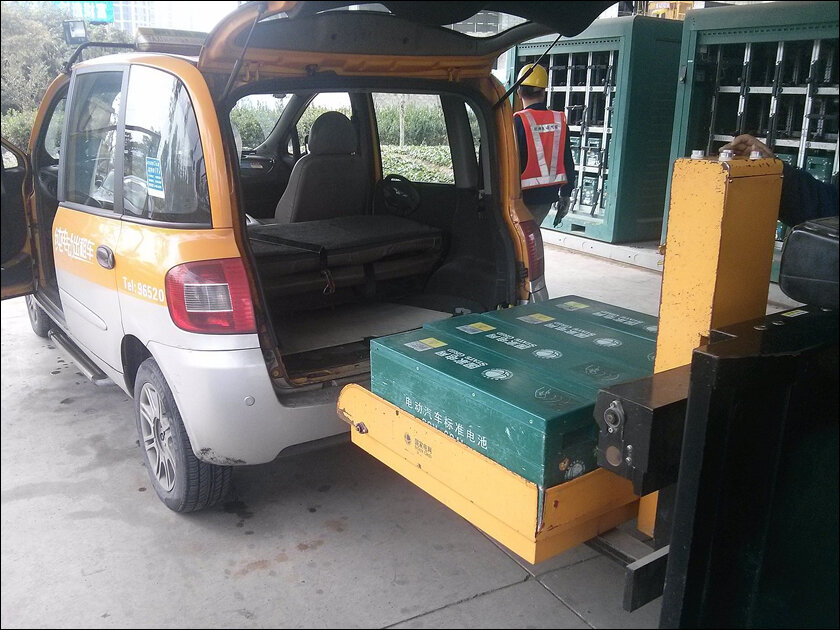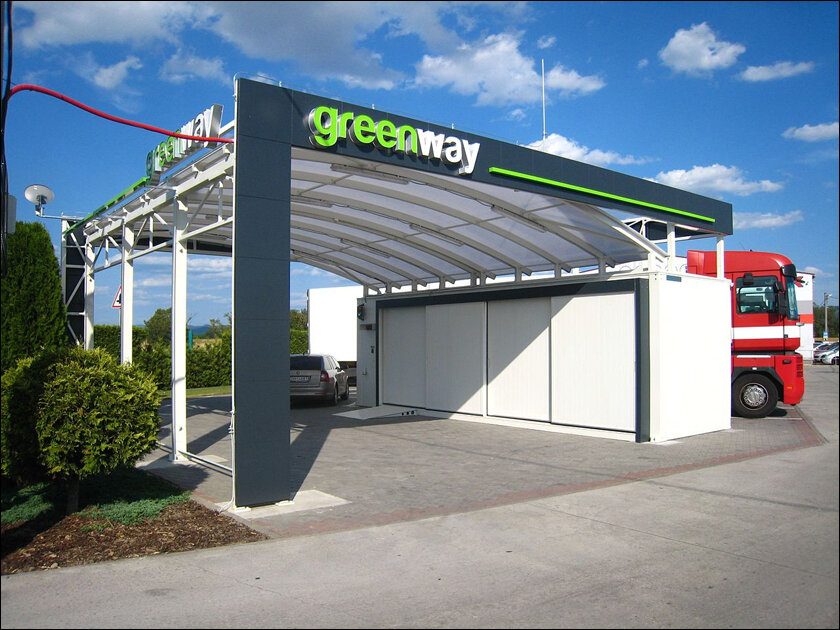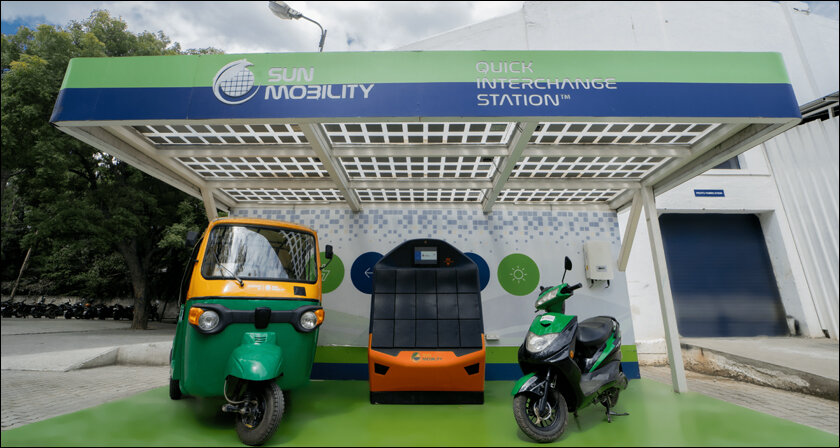When it comes to electric vehicles, the country set to change the world is India and it’s already doing so in unique ways finds Satyen K. Bordoloi.
Few know that electric vehicles (EVs) were invented 200 years ago and are as old as petrol-diesel ICE (internal combustion engine) vehicles. Between the 1890s and 1910s, EVs competed with ICE for US market dominance as people preferred EVs for mobility inside cities. A century later, we have a redux in the US. However, the real EV revolution is happening thousands of miles away, in India, where local ‘jugaad‘ – tinkering – is leading up to some strange and interesting solutions.
Multiple experiments are afoot in India: from rent-an-EV model for short mobility, EVs for short-duration public transport, electric cycles – even electric cycle rickshaws, and battery swapping and renting. Together they have not just pushed India to the top of the EV usage chart but will create EV solutions that will define the future and growth of the segment across the world.

(Image Credit: Wikipedia)
The Made-In India EV Revolution
For the last six months of the fiscal year ending March 2023, the number of EVs sold per month remained over 100,000 per month. In total, we crossed a million EVs sold in a year last FY, registering a 155 per cent year-on-year growth. Among all the different types of vehicles leading this exponential growth, are 2 and 3-wheelers which account for over 60 per cent sales in that period and a year-on-year growth of 185 per cent. This is according to the government’s own Vahan database.
Beyond this, the use of EVs as public transport has also seen an exponential rise in India. As we reported in Sify last year, three-wheel electric auto rickshaws plying short distances have become ubiquitous in just a few years. With little fuel cost, low registration hassle and almost anybody being able to drive with vehicles under the 25 km/hour speed limit not needing a licence, they have become a popular public mobility solution across the nation. Most of the companies making and selling EVs are not big brands, but local companies that began tinkering with EVs around 15 years ago with parts made in China. Now, they are an industry in itself moving the nation forward and the big guns have chimed in.

The EV craze is so rampant in India, that even the traditional cycle rickshaws have undergone this local ‘jugaad‘ and are being retrofitted or newly made with batteries and electric motors to run them. The result – as this author experienced recently in Guwahati where a majority of cycle rickshaws have become EVs – is a vehicle that is rickety and uncomfortable to ride especially considering the poor state of Indian roads and these rickshaws not upgrading their suspension. But since it does not go at high speeds and are mostly for a short distance, a ride on them is manageable.
The result is that the chance of an Indian out on any given day for work sitting on an electric vehicle is not only increasing, but if the numbers are anything to go by, we will surpass the world not just in numbers but also percentages.
Battery Swapping

However, the one thing that is hampering quicker adoption, is battery charging. In the US where most people live in ground-floor houses, charging is convenient. Not so in India where population density means that the reverse is true here: most Indians live in accommodations that do not have the facility for charging conveniently or building a charging infrastructure. Many literally park cars on the street. This makes having a personal charging infrastructure like in the US where people install electric chargers in their garages – extremely difficult. Even if the batteries are removable: taking these bulky things many floors home to charge is a huge hassle that people prefer to avoid.
It is for this reason that the best solution for India is mooted to be that of Battery Swapping. Think of the traditional cars that people have gotten used to. You drive them around and when the tank is empty, you go to a pump, spend 5 minutes to pay and fill your tank. EVs in India have to replicate that for people to take to the technology quickly. Luckily for us, this is the exact model that some companies are debuting and checking out in Bangalore.
There is another benefit to battery swapping: if Battery as a Service (BaaS) develops where the battery is decoupled from EVs, the cost of owning an EV goes down drastically. That is because, as it stands right now, the battery is nearly half of a vehicle’s cost. This BaaS model is also beneficial to battery manufacturers in the long run.

Battery swapping began in the 1890s, during the first EV wave. But it took until the last decade to get it to work hassle free like it does today. Multiple companies across the world are now offering battery-swapping technologies and services. But it has not taken off in a big way in cars because the batteries are big and bulky. Yet it is immensely popular in bikes and mopeds. Gogoro, a Taiwanese company, is one of the world’s largest battery-swapping infra companies and has revolutionised urban mobility in its own way.
Though Gogoro has also entered India via a JV with Hero Motors, one of the largest players in battery swapping here, has been co-founded by the man who made India’s first EV – the cute and handy Reva. Chetan Maini’s experience with Reva, helped him co-found Sun Mobility in 2017 – a battery-swap startup headquartered in Bangalore. They have already partnered with 10 manufacturers of electric rickshaws and mopeds with customers in a dozen and a half cities in India who can swap batteries in 300 Sun Mobility stations. They already have 15,000 customers and though the likes of Gogoro will give competition, expect to expand further.
GoI Intervention

Thankfully, the government of India is helping. With India having committed to achieving net-zero emissions by 2070 at the 26th Conference of the Parties (COP26) in November 2021, pushing out ICEs and replacing them with EVs will become a big part of this decarbonization process. The government is already supporting with initiatives like the Faster Adoption and Manufacturing of (Hybrid &) Electric Vehicles in India (FAME) I and II, and the Production Linked Incentive (PLI) scheme for the National Programme on Advanced Chemistry Cell (ACC) Battery Storage (NPACC) to boost indigenous battery manufacturing capacity. State governments are also developing complementary policies to promote EV adoption.
GoI is aware of the potential of battery swapping. NITI Aayog held an inter-ministerial discussion to formulate a robust and comprehensive battery-swapping policy framework in February 2022. They also held pre-draft discussions with stakeholders representing battery swapping operators, battery manufacturers, vehicle OEMs, financial institutions, CSOs, think tanks and other experts.

(Image Credit: Sun Mobility)
This led to the draft Battery Swapping Policy that can be read here. Its main objectives are to promote swapping to reduce upfront costs of buying EVs, give EV owners flexibility with swapping becoming an alternative to building charging facilities at home, set standards for interoperability within the battery ecosystem without hindering innovation, leverage policy and regulatory levers to de-risk the battery swapping ecosystem and unlock access to competitive financing, encourage partnerships among battery providers, battery OEMs and others to encourage a battery ecosystem, and finally to promote better lifecycle management of batteries.
The involvement of the government bodes well not just for the nation, but a large part of the world. Together the government and industry can not only usher in a bigger EV revolution in India, but they can also help set standards for a large part of the developing world, including South Asia and part of Africa where Indian vehicle manufacturers are gradually making inroads.
India may not have been the inventor or even the first user of EVs. But with battery swapping, it surely can be the leader.
In case you missed:
- 9 new ways to power data centers: the unthinkable to the absurd
- Rise of Generative AI in India: Trends & Opportunities
- AI vs. Metaverse & Crypto: Has AI hype lived up to expectations
- AI’s Top-Secret Mission: Solving Humanity’s Biggest Problems While We Argue About Apocalypse
- PSEUDO AI: Hilarious Ways Humans Pretend to be AI to Fool You
- Deep Impact: How Cheap AI like DeepSeek Could Upend Capitalism
- AIoT Explained: The Intersection of AI and the Internet of Things
- Is Cloud Computing Headed for Rough Weather
- And Then There Were None: The Case of Vanishing Mobile SD Card Slots
- India’s Upcoming Storm of AI Nudes & Inspiring Story Of A Teen Warrior









